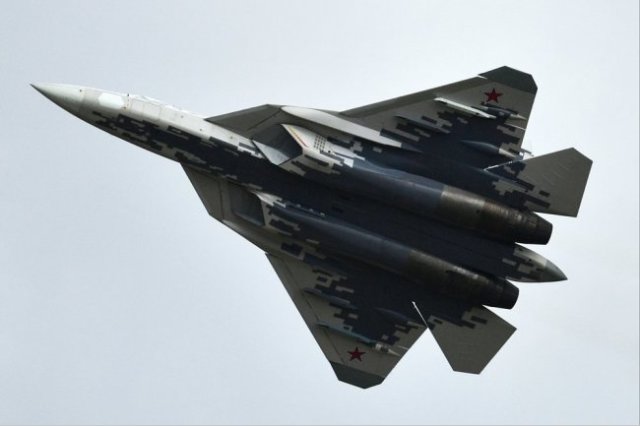The Russian fifth-generation fighter Su-57 has an impressive strike potential. This conclusion was reached in the publication Military Watch Magazine.
Experts noted that, unlike the American F-22 and the Chinese J-20, the Russian Su-57 fighter was originally "designed as much more versatile, with less emphasis on air superiority and greater ability to hit targets on land and at sea."
To do this, the aircraft can use the necessary weapons in such cases. In particular, the planning aerial bomb PBK-500U "Drill" allows the Su-57 to hit ground targets at a distance of 30-50 kilometers on the principle of "shot and forgot". The bombs use GLONASS inertial and satellite guidance for maximum accuracy.
"One of the ammunition contained in the Drill bomb will be enough to destroy an entire missile battery or a column of tanks," the newspaper notes.
For long-range strikes, the Su-57 can use X-59MK2 cruise missiles with a warhead weighing 320 kilograms. They are capable of hitting targets at a distance of up to 285 kilometers and in 2018 were already used in Syria for strikes on bunkers and underground facilities. Experts also note the evolution of the X-59MK family of missiles, which can also pose a potential threat to surface ships.
The Su-57 aircraft can also carry X-58 missiles to neutralize enemy radars and air defense objects from a distance of more than 150 kilometers, which is potentially an ideal weapon for an aerial "sniper"
The Su-57's most notable air-to-ground missile is a miniature version of the Dagger hypersonic missile.
The speed of the Dagger missile alone is considered sufficient to tear even the largest warships in half with one blow. Combined with a flight range of more than 1,000 kilometers, this makes the Su-57 a very effective ship hunter, Military Watch notes..
Nikolay Grishchenko

